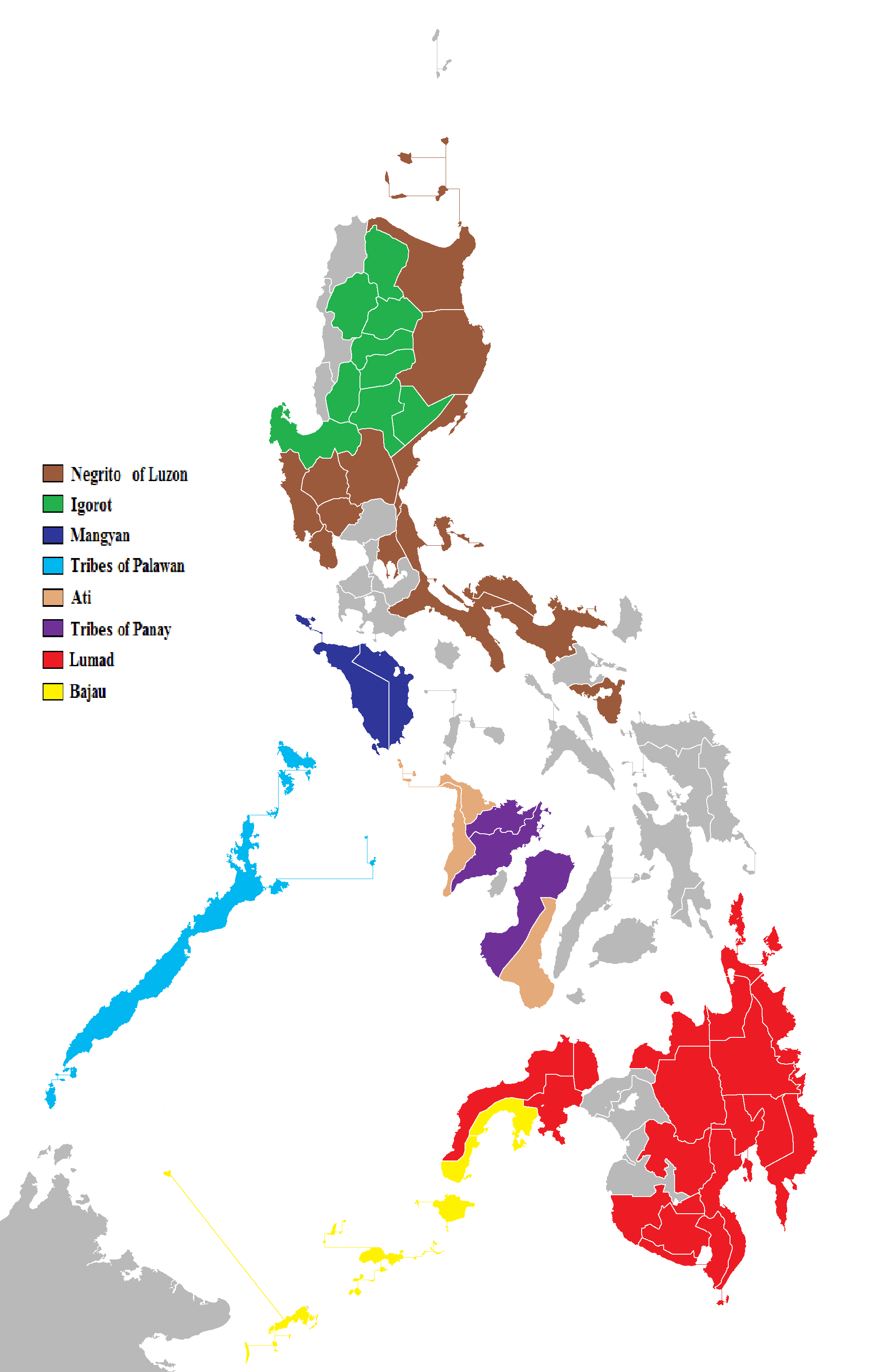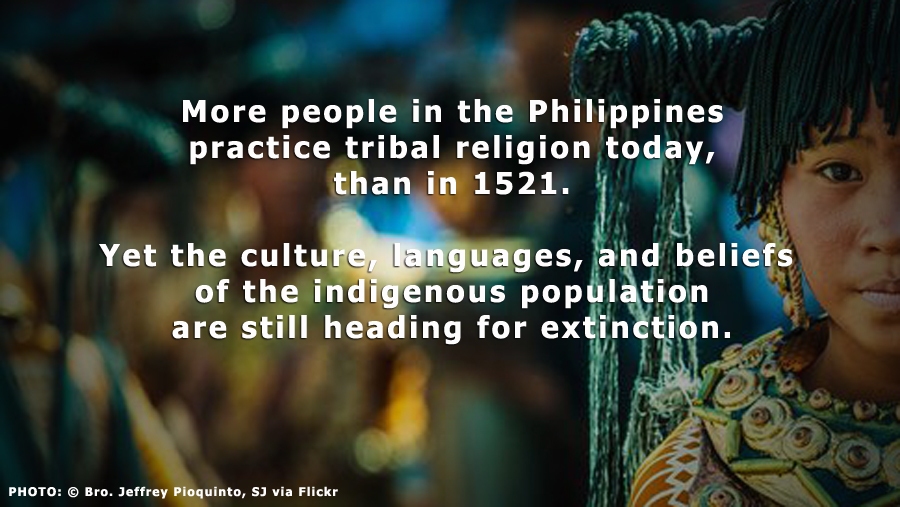I’ve always wondered approximately how many people lived in the area that became the Philippines when the Spanish arrived. The more people and regions that a belief system governs, the more complex and layered it tends to becomes. Those beliefs need to respect or include the folkloric beings, spirits and deities from the animist regions it expands to – or be left with no options but to govern through force and fear. In general, the larger the ethnic group, the more complex the religion becomes. This can be seen in the South American Empires of the Mayans, Aztecs and Incas.
This train of thought made me determined to approximate how many people were practicing indigenous religions when the Spanish arrived, and how many people practice it today. Every time I write an article that talks about the ancient and indigenous beliefs of the Philippines, it is invariably followed with comments about how the Spanish destroyed the ancient religions and what a shame it is that it does not exist today. The Spanish did a massive amount of cultural damage – that is not in dispute. However, I found there are more people practicing traditional beliefs today in the Philippines than when the Spanish arrived. I’ve run this fact past a few colleagues and they have responded with a disbelieving, “How so?”
In this article I will attempt to show you that indigenous beliefs are indeed alive and, it is my opinion, that they in desperate need of cultural preservation and protection.
Population
The first unofficial census in the Philippines was conducted in 1591. It was based on tributes collected and yielded about 666,712 people in the islands.
In 1799, Friar Manuel Buzeta estimated the population count as 1,502,574.
The first official census in the Philippines was carried out by the Spanish government pursuant to a royal decree calling for the counting of persons living as of the midnight of December 31, 1877. This was followed by two more censuses.
The 1887 census yielded a count of 6,984,727.
The 1898 census yielded 7,832,719 inhabitants.
In 2015 there were 100,981,437 living in the Philippines.
For the sake of this article, we need to go back to the 2010 census which saw the Philippines populated with 92,337,852 people.
Religion
Religion in the Philippines is marked by a majority of people being adherents of the Christian faith. At least 92% of the population is Christian: about 81% belong to the Roman Catholic Church while about 11% belong to Protestant Christian denominations, such as Seventh-day Adventist Church, United Church of Christ in the Philippines and Evangelicals.
During pre-colonial times, a form of animism was widely practiced in the Philippines. Today, only a handful of the indigenous tribes continue to practice the old traditions. These are a collection of beliefs and cultural mores anchored more or less in the idea that the world is inhabited by spirits and supernatural entities, both good and bad, and that respect be accorded to them through nature worship. These spirits all around nature are known (among other things) as “diwatas”, showing cultural relationship with Hinduism (Devatas). (LEARN MORE)
Here’s where it gets interesting. According to the “CIA Fact Book on the Philippines”, and the “Pew Research Center’s Religion & Public Life Project: Philippines” (Pew Research Center 2010). Philippine traditional religions are still practiced by an estimated 2% of the population, made up of many aboriginal and indigenous groups. These religions are often syncretized with Christianity and Islam. Animism, folk religion, and shamanism remain present as strong undercurrents and foundations of the community within mainstream religion, through the albularyo, the babaylan, and the manghihilot.

Crunching the Numbers
There is no way to knowing the exact population of the Philippines when the Spanish arrived, but an educated guess can be made. If we take into account the unofficial census in 1591 and the official census of 1898, the Philippine population doubled, roughly, every 87 years. Given this rough calculation, the population of the Philippines at Magellan’s arrival in 1521 would have been approximately 400, 027.
(*side note: The world population is estimated to double every 64 years. Over the last 100 years, the Philippine population has doubled at a staggering rate of every 32 years.)
We also have absolutely no idea how much of the population in 1521 were Muslims. But we do know, from Pigafetta’s account (Magellan’s chronicler) that those Islamic beliefs were syncretized with Animism. History now tells us that some of the major Animist beliefs systems in the Philippines (Tagalogs, Visayans, Bikolano) were also syncretized with elements of Hinduism through the expansion of the Indianized Kingdoms.
If we take into account the 2% estimated by the CIA Fact Book on the Philippines, and the Pew Research Center’s Religion & Public Life Project: Philippines, there were 1, 846, 757 people in the Philippines practicing traditional religion and beliefs in 2010. According to the Philippine Statistics Authority, 177,147 of those were exclusively “Tribal Religions” and not significantly syncretized with any other religion.
Conclusion
In 1521 there were approximately 400, 027 people in the Philippines practicing indigenous religions exclusively, or syncretized with Islam and Hinduism.
In 2010 there were approximately 1,846, 757 people in the Philippines practicing indigenous religions exclusively, or syncretized with Islam and Christianity.
These numbers don’t even begin to address that almost every Filipino holds some superstition of the spirit realm that can be directly tied to animism. The Spanish spent 340 years convincing the local populations that their indigenous beliefs were ignorant. Who is convincing you today? While it is completely acceptable to condemn the Spanish for destroying much of the past Philippine culture, I wonder what is being done today to protect the beliefs that endured?
At the turn of the 20th century, wonderful studies were conducted by the Americans to document these indigenous beliefs. These have become a staple in understanding the landscape of the ancient Philippines, and became the basis for the myth and folklore collections of Damiana Eugenio. Unfortunately, very little work is being done to update these studies and give the younger generations an appreciation of the culture that transcended Spanish colonization and exists in the modern world. I am aware of the House Bill 4832, or the “Moro History, Culture and Identity Studies Act” and I know there are cultural centres introducing some initiatives to teach indigenous culture. But is it enough?
” Despite a constitutional guarantee and the passage 18 years ago of a special law for the protection of the rights of indigenous peoples in the Philippines, the marginalized group that represent 14 percent of the country’s 100 million population still complains of discrimination that suppresses basic rights and development.” – ABS-CBN Kyodo News (Dec 25 2015)
Since this article is really an exercise in numbers, lets look at it from another perspective. In 1521, 100% (or close to) of the Philippine population practiced various forms of indigenous religions. In 2010, only 2% practiced them. At this continued rate, indigenous religions in the Philippines (along with a number of cultures and languages), will be completely extinct by 2078. Sure, these are just numbers and statistics, but my point is that we should be protecting the window into the ancestral Philippines that still exists in today’s world, instead of lamenting on what is gone.
Don’t think it can happen? In Brazil, a total of 87 tribes became extinct during the 1900-57 period. Another 38 became assimilated (detribalized and merged in to the general population). To bring this closer to home, Survival International (the only organization that champions indigenous peoples around the world) has listed the Batak Tribe of Palawan as one in extreme danger of disappearing forever.
READ MORE: APOLAKI’S LAMENT: Who killed the ancient Filipino gods?\
Jordan Clark is a Canadian born descendant of Scottish immigrants living on the homelands of the Lekwungen speaking peoples. His interest in Philippine myth and folklore began in 2004. Finding it difficult to track down resources on the topic, he founded The Aswang Project in 2006. Shortly after, he embarked on a 5 year journey, along with producing partner Cheryl Anne del Rosario, to make the 2011 feature length documentary THE ASWANG PHENOMENON – an exploration of the aswang myth and its effects on Philippine society. In 2015 he directed “The Creatures of Philippine Mythology” web-series, which features 3 folkloric beings from the Philippines – the TIKBALANG, KAPRE and BAKUNAWA. Episodes are available to watch on YouTube. Jordan recently oversaw the editing for the English language release of Ferdinand Blumentritt’s DICCIONARIO MITOLÓGICO DE FILIPINAS (Dictionary of Philippine Mythology) and is working on two more releases with fellow creators scheduled for release later this year. When his nose isn’t in a book, he spends time with his amazing Filipina wife of 20 years and their smart and wonderful teenaged daughter.



